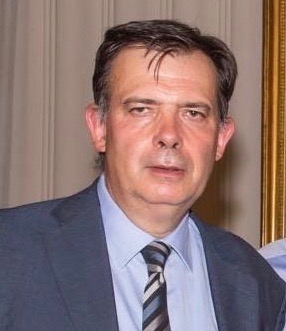Studying at the University of Verona
Here you can find information on the organisational aspects of the Programme, lecture timetables, learning activities and useful contact details for your time at the University, from enrolment to graduation.
Academic calendar
The academic calendar shows the deadlines and scheduled events that are relevant to students, teaching and technical-administrative staff of the University. Public holidays and University closures are also indicated. The academic year normally begins on 1 October each year and ends on 30 September of the following year.
Course calendar
The Academic Calendar sets out the degree programme lecture and exam timetables, as well as the relevant university closure dates..
| Period | From | To |
|---|---|---|
| I semestre | Oct 1, 2019 | Jan 31, 2020 |
| I° semestre - 3° anno | Oct 28, 2019 | Jan 31, 2020 |
| II semestre | Mar 2, 2020 | Jun 12, 2020 |
| Session | From | To |
|---|---|---|
| Sessione invernale d'esame | Feb 3, 2020 | Feb 28, 2020 |
| Sessione estiva d'esame | Jun 15, 2020 | Jul 31, 2020 |
| Sessione autunnale d'esame | Sep 1, 2020 | Sep 30, 2020 |
| Session | From | To |
|---|---|---|
| Sessione di laurea estiva | Jul 20, 2020 | Jul 20, 2020 |
| Sessione autunnale di laurea | Oct 20, 2020 | Oct 20, 2020 |
| Sessione autunnale di laurea - dicembre | Dec 11, 2020 | Dec 11, 2020 |
| Sessione invernale di laurea | Mar 19, 2021 | Mar 19, 2021 |
| Period | From | To |
|---|---|---|
| Festa di Ognissanti | Nov 1, 2019 | Nov 1, 2019 |
| Festa dell'Immacolata | Dec 8, 2019 | Dec 8, 2019 |
| Vacanze di Natale | Dec 23, 2019 | Jan 6, 2020 |
| Vacanze di Pasqua | Apr 10, 2020 | Apr 14, 2020 |
| Festa della Liberazione | Apr 25, 2020 | Apr 25, 2020 |
| Festa del lavoro | May 1, 2020 | May 1, 2020 |
| Festa del Santo Patrono | May 21, 2020 | May 21, 2020 |
| Festa della Repubblica | Jun 2, 2020 | Jun 2, 2020 |
| Vacanze estive | Aug 10, 2020 | Aug 23, 2020 |
Exam calendar
Exam dates and rounds are managed by the relevant Science and Engineering Teaching and Student Services Unit.
To view all the exam sessions available, please use the Exam dashboard on ESSE3.
If you forgot your login details or have problems logging in, please contact the relevant IT HelpDesk, or check the login details recovery web page.
Should you have any doubts or questions, please check the Enrollment FAQs
Academic staff

Boselli Maurizio
 maurizio.boselli@univr.it
maurizio.boselli@univr.it
 3478344185
3478344185
 lorenzo.meneghini@univr.it
lorenzo.meneghini@univr.it
 chiara.nardon@univr.it
chiara.nardon@univr.it
Sandri Marco
 marco.sandri@univr.it
marco.sandri@univr.it
Study Plan
The Study Plan includes all modules, teaching and learning activities that each student will need to undertake during their time at the University.
Please select your Study Plan based on your enrollment year.
1° Year
| Modules | Credits | TAF | SSD |
|---|
2° Year activated in the A.Y. 2020/2021
| Modules | Credits | TAF | SSD |
|---|
3° Year activated in the A.Y. 2021/2022
| Modules | Credits | TAF | SSD |
|---|
| Modules | Credits | TAF | SSD |
|---|
| Modules | Credits | TAF | SSD |
|---|
| Modules | Credits | TAF | SSD |
|---|
Legend | Type of training activity (TTA)
TAF (Type of Educational Activity) All courses and activities are classified into different types of educational activities, indicated by a letter.
Mathematics and statistics (2019/2020)
The teaching is organized as follows:
STATISTICA
Credits
3
Period
II semestre
Academic staff
Marco Sandri
Learning outcomes
The aim of this course is to provide, across the three modules, detailed knowledge concerning
- the main methods of calculus and linear algebra, with application to modeling in natural sciences;
- the main methods of univariate and bivariate descriptive statistics for the analysis of qualitative and quantitative data in the context of viticulture and oenology.
Program
------------------------
MM: MATEMATICA
------------------------
(PREREQUISITES: Algebraic, exponential and logarithmic equalities and inequalities.)
1) Functions. Limits. Continuity.
2) Derivation and differentiation of functions. Rolle's, Lagrange's and de l'Hospital's theorems and their consequences. Applications and examples.
3) Functions and their graphs. Function's graph and linear transformations. Applications to natural sciences.
4) Integration of functions of a single real variable. Applications and examples.
5) Simple examples of differential equations.
6) Linear systems and matrices: determinants, inverse matrix, Applications to natural sciences.
Each topic is discussed both from a theoretical and an empirical point of view, with special focus on applications.
(notes and slides available at link https://app.box.com/s/t2jamq852r8j93qhhxomjy4rmckmh5vy )
------------------------
MM: STATISTICA
------------------------
1) Introduction to statistical data analysis: approaches and main topics 2) Univariate descriptive statistics: - Dynamic analysis by means of ratios - Frequency distributions - Location indices: Mode, median, percentiles, algebraic means - Heterogeneity and variability and indices: Gini Index, Shannon entropy, range, absolute deviations, standard deviation, variance. 3) Bivariate descriptive statistics: - Joint frequency distributions - Analysis of association - Analysis of mean dependence - Analysis of linear correlation - Simple linear regression Each topic is discussed both from a theoretical and an empirical point of view, with special focus on case studies dealing with problems arising in the context of viticulture and oenology.
Bibliography
| Author | Title | Publishing house | Year | ISBN | Notes |
|---|---|---|---|---|---|
| S. Bernstein and R. Bernstein | Elements of Statistics - Descriptive Statistics and Probability - Schaum’s Outline Series. | McGraw-Hill | 1999 | 0-07-005023-6 |
Examination Methods
------------------------
MM: MATEMATICA
------------------------
Students are evaluated by means of a written comprehensive examination, composed of exercises and questions. A time of 2 hours is scheduled. The grades are on a scale of 30. Students who attend lessons can decide to divide the exam in two parts, to be done before the class ends. A time of 2 hours is scheduled for each part and the grades are on a scale of 30. In that case, the mark of Mathematics will be calculated as the average of the scores obtained in the two different parts; in the case of a non-integer result, the mark is rounded upward.
------------------------
MM: STATISTICA
------------------------
Students (regardless whether or not they attended lessons) are evaluated by means of a written comprehensive examination, composed of exercises and questions. A time of 2 hours is scheduled. The grades are on a scale of 30.
------------------------------------------------------------------------------
Rules for defining the final grade of the Mathematics and Statistics course
------------------------------------------------------------------------------
The final grade summarizes the tests carried out in the two modules: (1) A module is successfully completed if the student achieves a score of at least 15/30. (2) The examination of Mathematics and Statistics shall be passed only if both modules are successfully completed, provided that the average of the two scores, calculated as shown in (3), is not less than 18/30. (3) The final mark is calculated as the average of the scores obtained in the two modules weighted by the number of credits; in the computation of the average, at 30 cum laude obtained in a module is assigned a score of 31; in the case of a non-integer result, the mark is rounded upward; in the case of an average of at least 30, the final mark will be 30 cum laude.
The exam can be verbalized only after passing the exams related to both modules.
Type D and Type F activities
Modules not yet included
Career prospects
Module/Programme news
News for students
There you will find information, resources and services useful during your time at the University (Student’s exam record, your study plan on ESSE3, Distance Learning courses, university email account, office forms, administrative procedures, etc.). You can log into MyUnivr with your GIA login details: only in this way will you be able to receive notification of all the notices from your teachers and your secretariat via email and soon also via the Univr app.
Graduation
Attendance
As stated in the Teaching Regulations for the A.Y. 2022/2023, attendance is mandatory for practical and laboratory activities, unless otherwise determined by the Teaching Committee.
Documents
| Title | Info File |
|---|---|
|
|
pdf, it, 121 KB, 18/10/23 |



























